Repainted Cans
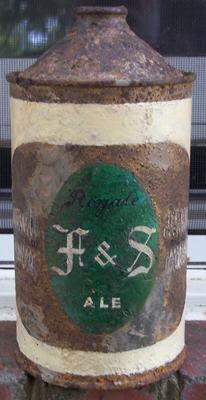 |
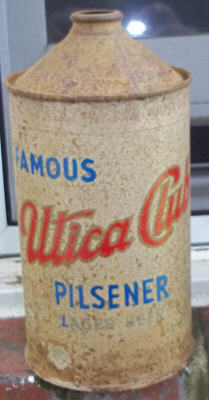 |
This month let's look at some repainted cans. Repainting a can to fix or touch-up a damaged can is still practiced, but is generally frowned on. In contrast, during the heyday of can collecting in the 1970s, repainting was very popular. The first issue of the BCCA magazine I received after joining in 1977 featured a cover story about repainting cans.
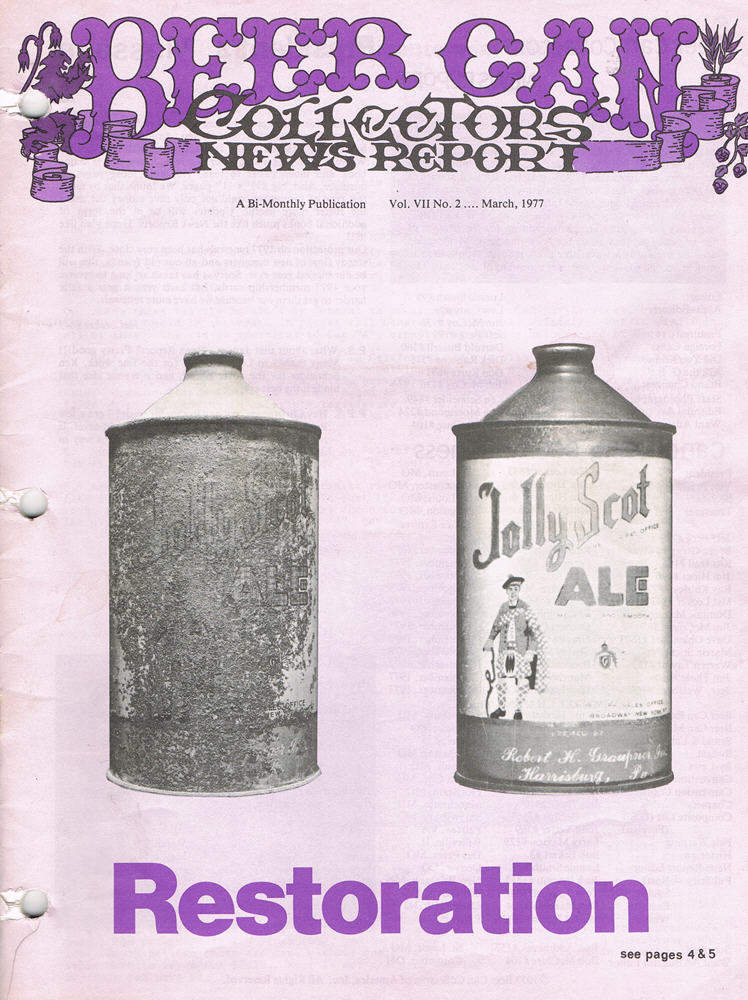 |
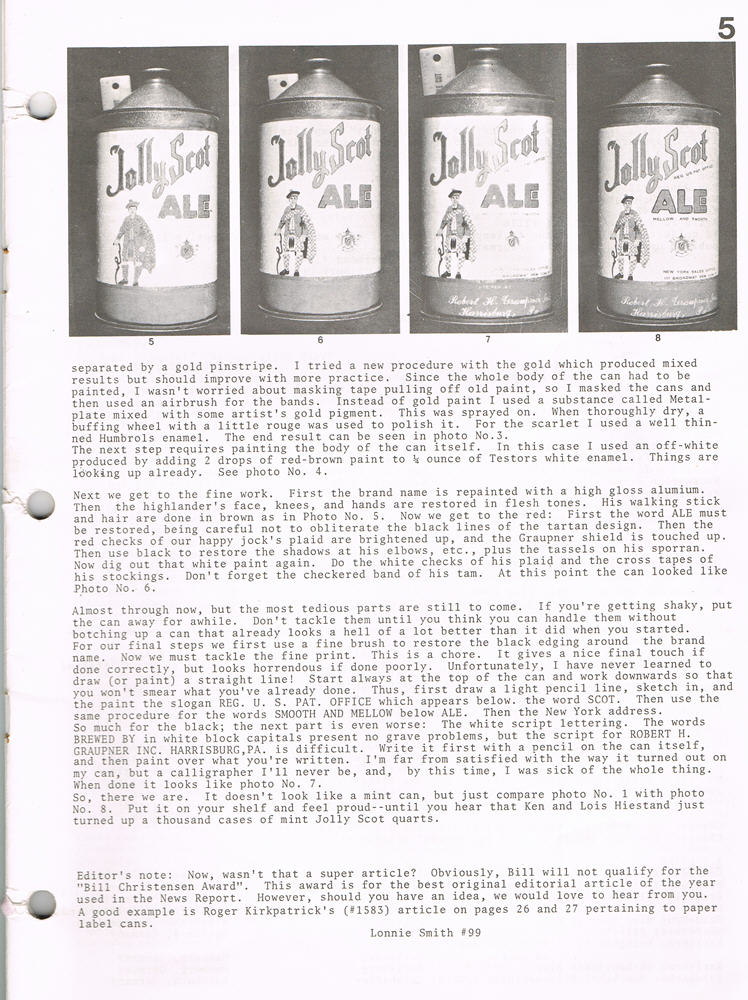 |
The cover of the first BCCA magazine I ever received. The March 1977 issue. |
A page from an article in the March issue giving detailed instructions on repainting this can. (click to embiggen) |
First off, what is the difference between a "repainted can" and an "paint over" such as my May 2009 COM Wagner's can? A repainted can is on that was repainted by someone, usually a collector, after it has been sold to the consumer. The repainting is usually an effort to repair a damaged can, but can also include people creating novelty cans, or creating a fake or fraudulent label. A paint-over is a can that was recycled by the canning company that took sheets of unused cans, painted a new label over the old, and then sold the new can to another company. My May 2009 COM is an Ebling quart that the can company painted over with a Wagner's brake fluid label and was then used by the Wagner company.
This month's cans are two can that were repainted--someone tried to repair damage by repainting part of the labels. The F&S Ale had new green and white paint added, and the Utica Club had the red and blue redone. I really dislike repainted cans. Maybe it's my museum experience, but that type of repair, even when done well, rubs me the wrong way. I'd rather see the damage to the original can. I don't mind patching holes, as that can help reinforce a dumper can to prevent further damage. But repainting seems to go beyond necessary repairs designed to stabilize the artifact and move towards hiding the damage.
Here are the cans with the added paint removed. As you can see the F&S Ale had some holes patched and the repaint was done to cover the holes. (Stripping off the paint also removed the patches). The Utica Club shows some remaining red and blue paint that smeared. This can happen fairly easily when the dissolving paint gets into a divot in the rust.
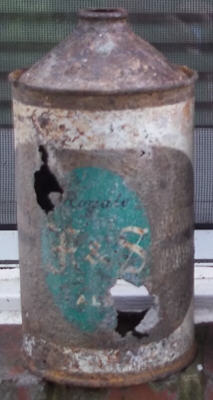 |
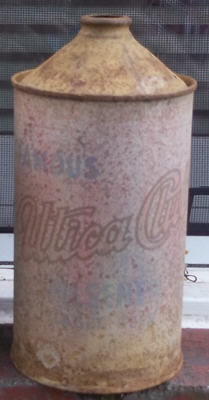 |
| Yes, I know, it's one ugly can. But it's so rare that i am happy to have one. | Eh, not as nice as I had hoped. |
How do you strip off the added paint? I use acetone. I have a clean metal paint can with a lid. I fill it with acetone high enough to cover the repainted can. I then dip the repainted can into the acetone. I close the lid and I let it sit for a few minutes. The time I let the can sit in the acetone varies by type and color of paint. Some paints, like the green on the F&S Ale above, come off after a couple minutes. Some paints, like silver model paint from the 1970s, can take 20 minutes. Odds are good you will not remove all the new paint. Some things, such as some magic marker ink, often do not come off at all. Still, you can restore most of the original label.
Once the overpaint is softened I swish the can around a bit in the acetone and I very, very gently use a soft cloth to wipe off the remaining paint. BE CAREFUL. The original paint will also soften a bit and can also be removed.
Do this in a WELL VENELATED AREA. And beware, acetone evaporates quickly so make sure you keep it stored in a tightly sealed container. It is also poisonous and flammable. BE CAREFUL. I only do this work in my tool shed, with the doors open, wearing heavy gloves and wearing an apron to protect my clothes.
